Lychee is an iconic fruit of Vietnam, enjoyed in various forms throughout the country. From fresh lychee orchards to local markets offering enticing lychee products, it’s clear that this succulent fruit is an essential part of Vietnamese culture. If you’re looking for an adventure exploring this delicacy’s flavors and traditions, look no further! Our guide to “Lychee in Vietnam” takes you on a journey to discover this fruit’s best places and unique flavors. Keep reading for information on where to go, what souvenirs to pick up, and suggested itineraries for experiencing everything that comes with sampling freshly picked lychees!
Contents
Lychee in Vietnam: Origin, Varieties, and Cultural Significance
Lychee is a tropical fruit popular worldwide for its unique flavor and texture. It originated in China but has since been cultivated in various parts of the world, including Vietnam.
In Vietnam, lychee cultivation has been around for centuries, dating back to the 11th century. The northern province of Hai Duong is considered the lychee capital of Vietnam, producing over 20,000 tons of lychee every year. With its rich history and delicious flavor, lychee has become a beloved staple in Vietnamese cuisine.
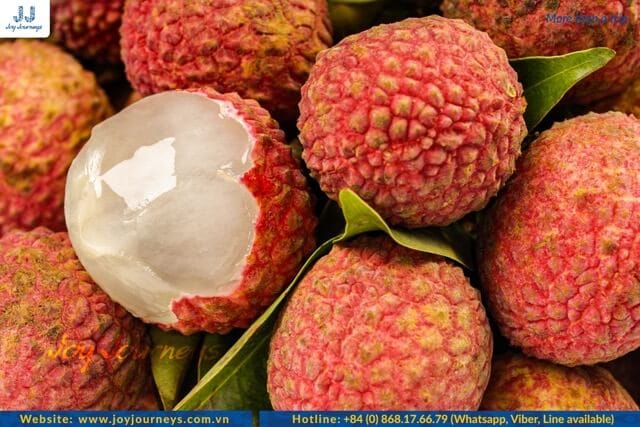
Lychee is an important fruit tree in Vietnam’s agricultural economy. Since its introduction to Vietnam, lychee has grown and developed in many regions, including Bac Giang, Hai Duong, Hung Yen, Bac Ninh, and Ha Nam.
People in these regions have found many effective methods for growing and protecting lychee, which has helped boost lychee production in Vietnam in recent years. Currently, Vietnam is the second-largest lychee producer in the world after China.
Vietnam boasts a wide range of lychee varieties, each with a unique taste and texture. The most famous ones include Thieu lychee, Luc Ngan lychee, and Longan lychee.
These fruits are not just a source of nutrition but are revered for their cultural significance. Lychee holds an important place in the traditions and customs of Vietnam.
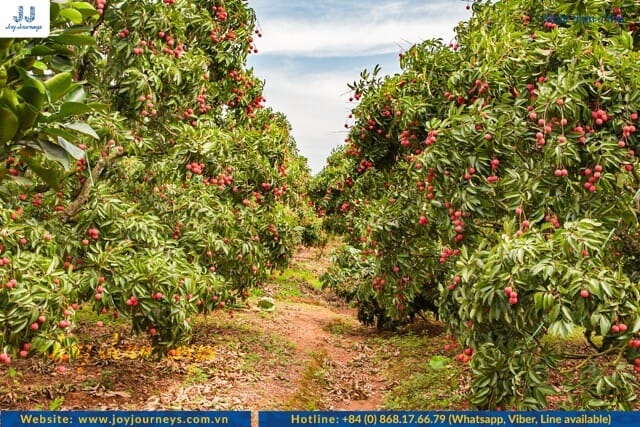
In Vietnam, lychee trees are celebrated as a symbol of wealth, fertility, and vitality. The fruits are given to the gods, ancestors, and guests during festive occasions and ceremonies.
For instance, during the annual lychee harvest, the people of Bac Giang province organize a grand festival where they showcase their finest lychee fruits.
Vietnamese people have demonstrated their reverence for this delectable fruit through these traditions and festivals, making it an integral part of their cultural heritage.
Over time, lychee cultivation and production in Vietnam has experienced many ups and downs, but its cultural significance has remained strong.
Today, lychee continues to be a beloved fruit in Vietnam and worldwide, appreciated for its delicious taste and rich cultural history.
Lychee Season in Vietnam: A Time for Delight
Lychee season in Vietnam typically runs from May to August, with the peak harvest usually in June.
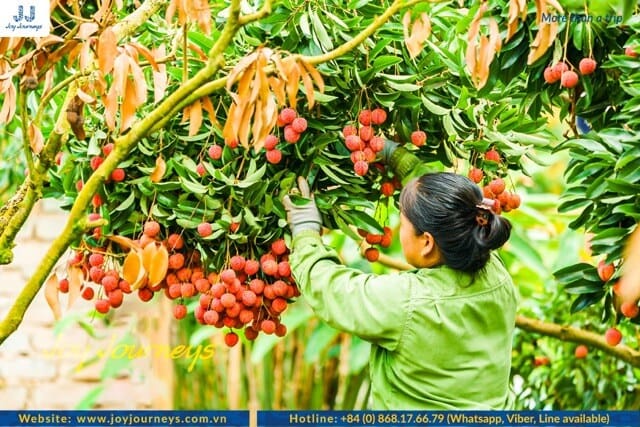
Vietnam is one of the largest producers of lychees in the world, with the fruit being grown in several regions, such as Bac Giang, Hai Duong, and Hung Yen.
During the season, lychee stalls can be found across the country, with locals and tourists alike enjoying the sweet and fragrant fruit.
While the exact timeframe for lychee season may vary slightly each year, it is generally a great time to visit Vietnam and experience the country’s bustling markets and delicious food offerings.
Where to Find and Purchase Fresh Lychee in Vietnam?
Lychee is a delicious and popular fruit in Vietnam, and several regions within the country are particularly renowned for their lychee cultivation.
One of the most popular areas is Hai Duong, located in northern Vietnam. Here, the locals take great pride in their lychees, which they have been growing for over a century.
Another region famous for its lychees is Bac Giang, also located in the north of Vietnam.
The lychees grown here are particularly sweet and juicy and are considered by many to be some of the best in the country.
Finally, there is the province of Hung Yen, which has long been a hub of lychee production in Vietnam. With its fertile soils and perfect climate, it’s no wonder that so many top-quality lychees are grown in this region.
If you’re looking to buy fresh lychee in Vietnam, several options are available.
Local markets are a great place to start, with a wide variety of fresh fruit available.
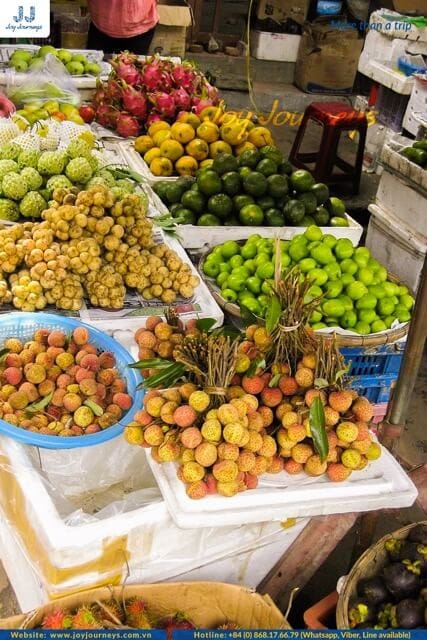
You can also visit nearby farms that grow lychee and purchase some directly from the source. For a unique experience, consider buying from local vendors who sell their produce along the roadside, and don’t be afraid to bargain for the best price.
With so many options available, you’re sure to find the perfect spot to get your fix of refreshing lychee in Vietnam.
To ensure that you’re buying fresh and safe lychee, it’s important to check the quality standards and procedures at local markets and shops.
Look for lychees with a bright red color, free of cracks or blemishes, and make sure they are stored in a cool and well-ventilated place.
Alternatively, you can visit nearby farms and purchase lychee directly from the source, ensuring you get the freshest fruit possible.
With so many options available, finding the perfect spot to get your fix of refreshing lychee in Vietnam is easy.
Indulging in Lychee: Traditional Delights and Culinary Creations
Indulging in lychee can bring your culinary creations a unique and delightful experience.
If you’re considering using lychee in your cuisine, comparing the differences between fresh lychee and canned or frozen lychee is worth comparing.
While fresh lychee has a sweeter taste and more intense juice than canned or frozen lychee, the latter option may be more convenient for use in dishes and drinks due to its longer shelf life.
Factors such as price and convenience should also be considered when deciding whether to use fresh lychee or canned/frozen lychee.
In Vietnamese cuisine, lychee is a beloved fruit with a sweet and succulent flavor that can be found in various dishes, drinks, and desserts.
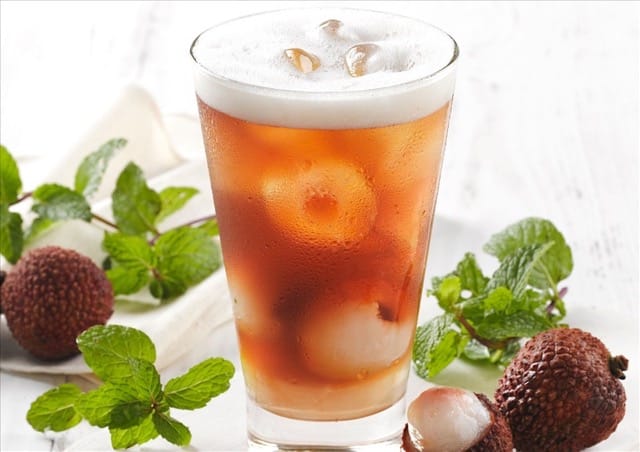
This tropical fruit is a common ingredient in traditional Vietnamese delicacies, from the classic lychee smoothie to the refreshing lychee salad.
Lychee ice cream or sorbet and lychee sticky rice are among the most popular ways to enjoy this fruit, often served during special occasions like weddings and festivals.
Whether you’re a lychee lover or simply looking to try something new, exploring traditional lychee delicacies in Vietnam is a must-do for any foodie.
This juicy fruit is considered a symbol of happiness, good fortune, and longevity in many cultures.
In Vietnam, lychee is enjoyed as a refreshing snack during hot summer days, and the shell of the fruit is used as a natural remedy for skin problems.
The Nutritional Value and Health Benefits of Lychee
Lychee is a fruit that is native to Vietnam and has recently gained popularity in many parts of the world due to its impressive nutritional composition.
This fruit is a rich source of vitamins such as vitamin C, vitamin B-complex, and potassium.
Moreover, it contains flavonoids and polyphenols, which act as powerful antioxidants and protect the body against damage caused by free radicals.
Consumption of lychee has been linked to many health benefits, including improved digestion, enhanced immunity, and better heart health.
Additionally, studies have shown that lychee may have anti-inflammatory and anticancer properties. Indeed, lychee is a delicious and nutritious fruit that satisfies your sweet tooth and contributes to your overall well-being.
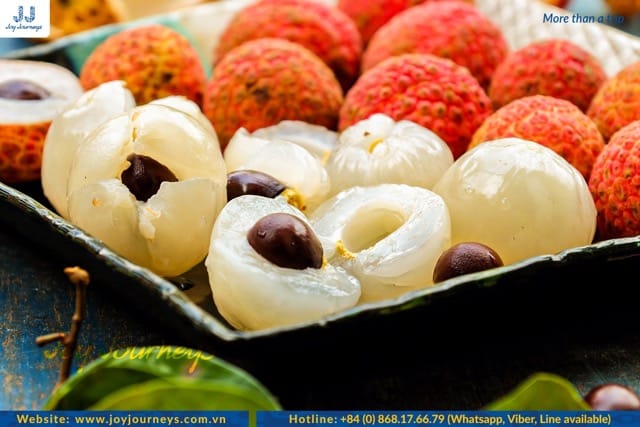
Conclusion
Lychee is a beloved fruit in Vietnam, enjoyed as a convenient snack or a delicious dessert.
Whether you’re exploring Vietnam’s orchards, markets, or cafes for traditional delicacies made with lychees or checking out souvenirs crafted from the fruit, this post has provided you with knowledge about the remarkable properties of this fruit.
So, remember to indulge in some lychees during your journey through the jungles of Vietnam.


Related Posts
Floating Fish Farms: Life and Aquaculture On The Mekong
The floating fish farms Mekong represent one of the most ingenious and sustainable aquaculture systems in Southeast Asia, showcasing the remarkable adaptability of Vietnamese communities to their riverine environment. These innovative structures, scattered throughout the Mekong Delta’s vast network of waterways, serve as both homes and workplaces for thousands of families who have perfected the […]
Vietnamese Folk Music: A Journey Through Tradition
Vietnamese folk music represents one of the most vibrant and diverse musical traditions in Southeast Asia, serving as a living testament to Vietnam’s rich cultural heritage. This ancient art form has evolved over thousands of years, weaving together the stories, emotions, and daily experiences of the Vietnamese people into sweet melodies that continue to resonate […]
Vietnam Coconut Candy: A Sweet Taste Of The Mekong Delta
Vietnam coconut candy represents one of the most beloved and iconic sweets in Vietnamese cuisine, embodying the rich agricultural heritage of the Mekong Delta region. This chewy, aromatic confection has captivated both locals and international visitors for generations, serving as a perfect introduction to the unique flavors and traditional craftsmanship that define Vietnamese culinary culture. […]